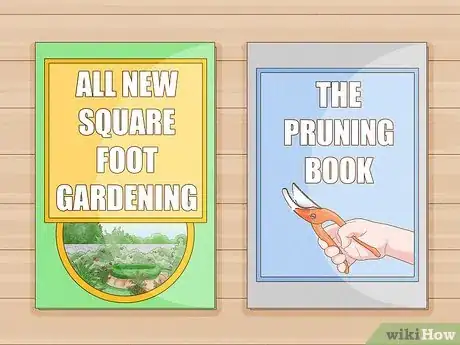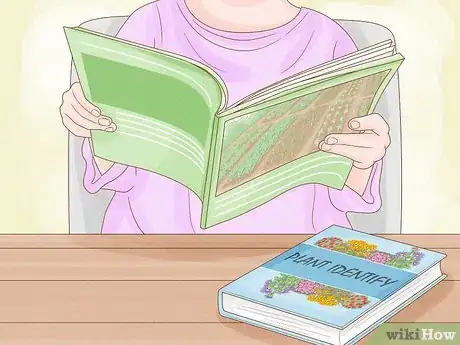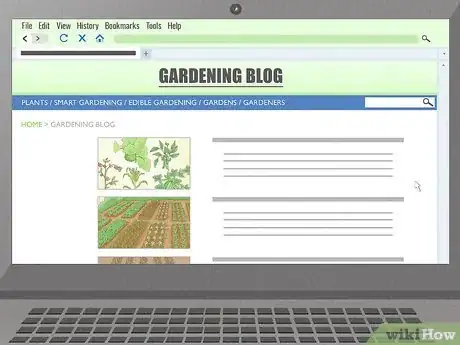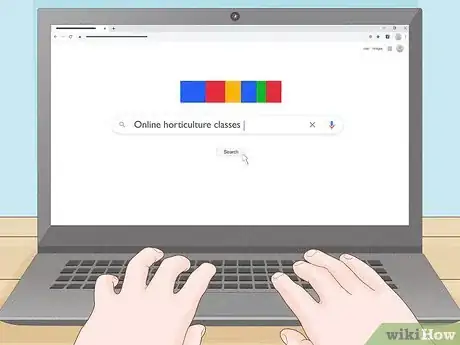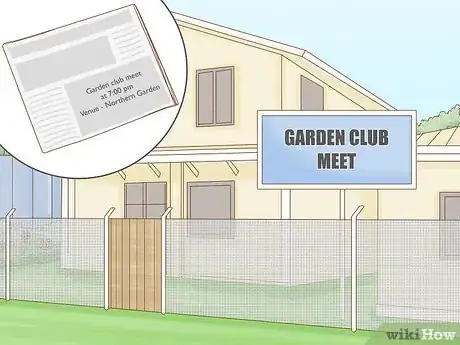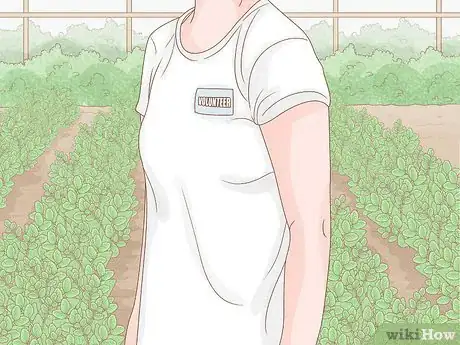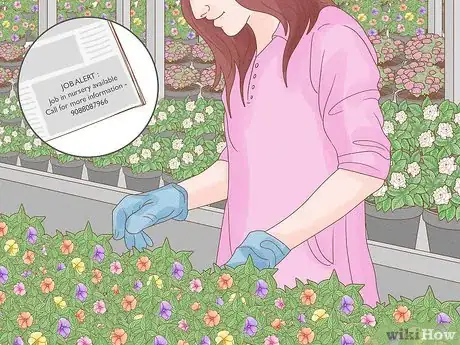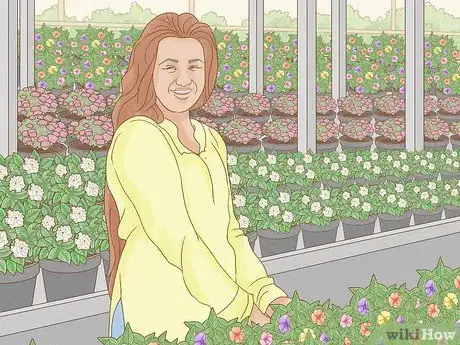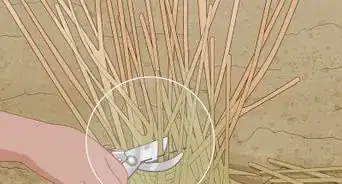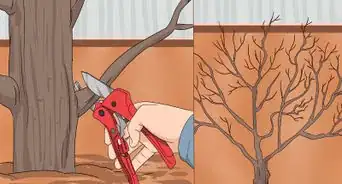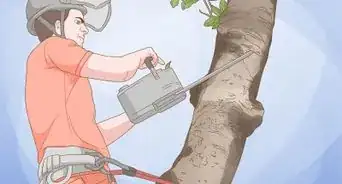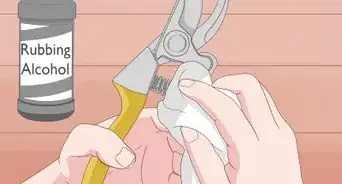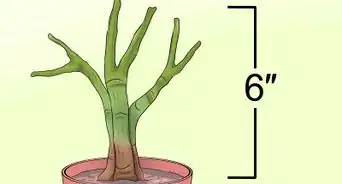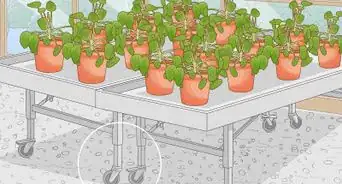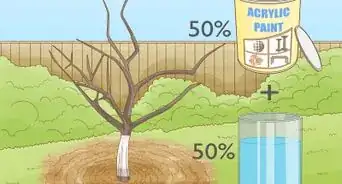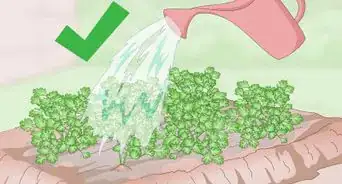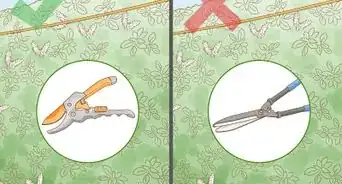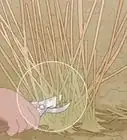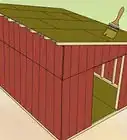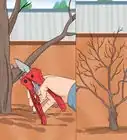This article was co-authored by Lauren Kurtz. Lauren Kurtz is a Naturalist and Horticultural Specialist. Lauren has worked for Aurora, Colorado managing the Water-Wise Garden at Aurora Municipal Center for the Water Conservation Department. She earned a BA in Environmental and Sustainability Studies from Western Michigan University in 2014.
This article has been viewed 20,473 times.
Horticulture is the study and practice of cultivating a garden, both for appearance and as a food source. For casual studying, look into gardening books, magazines, and blogs. You’ll learn some basic scientific knowledge, as well as pick up many practical tips for working a garden. If you are interested in pursuing a paying career in the field, taking some online classes from home is a great place to start.
Steps
Reading up on Horticulture Basics
-
1Read some essential books for beginners. From picking up basic science knowledge to acquiring practical horticulture skills, reading is a must. You’ll find more than you can possibly get through at your local library, but start with some basics like All New Square Foot Gardening and The Pruning Book.[1]
- For more suggestions, check out the Independent’s article titled “The Most Essential Books for Beginning Gardeners,” which provides titles that are essential garden reading.
- If you don’t have the time or desire to look through the library, browse an online catalogue of garden books on a bookstore’s website. Order the books that sound the most interesting.
-
2Subscribe to a gardening magazine. For consistent reading material in smaller chunks, magazines are the way to go. Skim through a list of dozens of great magazines to find the one that would be most helpful. You may not get in depth knowledge, but you’ll get practical tips to improve your methods.[2]
- Magazines are a great way to get some basic, casual knowledge. You’ll be able to pick things up quickly without pushing your mind too hard.
- Magazines are also designed to be read in bits and pieces, so the time commitment in each sitting is smaller.
Advertisement -
3Follow a high-quality gardening blog. Books and magazines may require more time than you usually have to read. The plus side of blogs is they tend to be pretty short and to the point. You’ll also get tips that are more timely based on the season. Check out a handful of blogs for a week or so to figure out which ones you find the most useful.[3]
- Set up email notifications so you’ll automatically receive new content whenever the blog posts it.
Taking Online Classes
-
1Research universities with online Horticulture classes. Many tech schools, state universities, and even an Ivy League school or two, offer online or “distance learning” opportunities. Start by checking out the course catalogue for schools near you. Then expand outward to see what options you find.[4]
- For example, open a web browser and search for “online horticulture classes.” Also search specialized courses on permaculture, gardening, or botanical illustration.
- If you find interesting classes at a school that’s out of your price range, look for the same classes at more affordable schools.
-
2Enroll in a few classes that seem most interesting to you. If you want to casually start up an education in horticulture, choose two or three classes from one of the universities you found in your research. Look at the horticulture group of classes and pick ones that perk up your interest.
- Taking a couple of classes is a good way to find out if you are really interested enough in the subject to work hard on studying it.
- You’ll pick up some useful knowledge in these classes, even if you choose not to pursue horticulture any further afterward.
-
3Apply for a full degree program. You may want to pursue horticulture as a career path. In many cases, to get a specialized job in a horticultural field you’ll need in-depth training, as well as a degree. Find a school that offers an Associate’s, Bachelor’s, or Master’s degree in horticulture.[5]
- Areas of focus include but aren’t limited to: floral design, nursery management, research, sustainability, and turf management.
- Most of the time, an Associate’s degree takes 18 months to two years to complete. A Bachelor’s degree usually takes four years. A Master’s degree requires previous study, and takes about two years to complete.
Getting Your Hands Dirty
-
1Join a community garden club. Look through your local newspaper or community bulletin board for gardening groups or clubs. They may hold meetings or seminars where you’ll learn valuable garden knowledge. Clubs sometimes tend a community garden where you can get hands on experience with various plants.
- If you can’t find an official club, ask around your friends and family to see if anyone works a garden that you could come and check out.
-
2Volunteer at a commercial plant farm. Search the business directory for plant farms near you. Give them a call and ask if you could spend a few hours a week working with them. Just watching how they tend the plants will teach you a lot. Work the plants if they will let you.
-
3Apply for jobs at local nurseries or landscaping companies. If you are interested in starting a new job path, or you have some free time to pick up part-time work, look for nursery jobs. Your job would consist of growing plants and transplanting them to their new homes.
- This type of work requires you to be outside and do a lot of bending and heavy lifting. Make sure you are physically fit enough for this type of work.
-
4Start your own garden. One of the best ways to learn is by doing. So find a garden spot in your yard, till up the soil, and plant some seeds. You may not succeed with all of the plants at first, but you’ll learn a lot along the way. Find a few food plants or flowers that you are interested in, and buy seeds to start up your garden.
References
- ↑ http://www.gardensalive.com/product/the-most-essential-books-for-beginning-gardeners/you_bet_your_garden
- ↑ http://www.vegetablegardeningideas.com/gardening-magazines-list/
- ↑ http://pallensmith.com/2014/01/01/garden2blog-2014/
- ↑ http://learn.org/articles/Where_Can_I_Find_an_Online_Horticulture_School.html
- ↑ http://learn.org/articles/What_is_a_Degree_in_Horticulture_Studies.html
